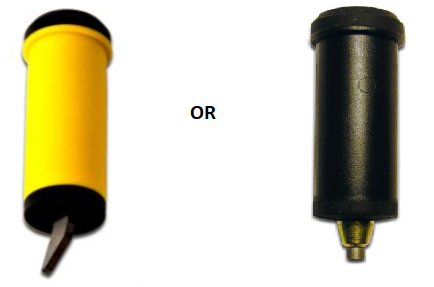Your Summer Activity idea: Nordic Walking
Nowadays, one of the most popular summer and off-season activities is Nordic walking, mainly because it represents an effective but gentle type of complete body exercise. Nordic walking is an activity that is highly recommended for the whole population, no matter the age or level of fitness. It unites young and young at heart. However, as with most exercises, it has to be done correctly and with the right equipment to fully experience all its benefits.
Table of Contents
Click for easy navigation between sections.
- Choosing Nordic walking poles
- What kind of grips and straps are suitable for Nordic walking poles?
- The difference between Nordic walking poles and trekking poles
- How to use Nordic walking poles correctly
- 5 health benefits of Nordic walking
Choosing Nordic walking poles
Nordic walking was originally designed as summer training for cross-country skiers but is gaining attention all around the world and gives you the possibility of efficiently enhancing your walking routine.
It is performed using Nordic walking poles, which bring the upper torso into a complete body workout activating all main muscle groups. Working with arms relieves pressure on ankles, knees, hip joints, and the spine, engaging almost 90% of muscles.
Walking with Nordic walking poles improves pace, balance, body coordination, and endurance. Regular Nordic walking exercise also contributes to weight loss and general well-being.
Height-adjustable poles are highly recommended as they can easily be adjusted to the user's body height using a special mechanism – internal or external (Fast-Lock / Speed-Lock).
The right height for Nordic walking poles
The correctly determined individual height of Nordic walking poles significantly affects the correct walking technique. Walking will be difficult if the poles are too long or too short.
The correct height for a user's Nordic walking poles can be easily calculated by using the following universal formula: user height (in cm) x 0.69
Grip for Nordic walking poles
The grip is quite an important part of the pole. It should be comfortable, covered with soft cork (at least partly), making it softer, not slippery, and warmer on colder days.
Strap for Nordic walking grip
Straps have an optimized shape (ergonomic) and are made of a softer inner material. When the hand is comfortably placed in a properly tightened Nordic walking strap, it enables a correctly performed thrust.
Nordic walking pole tip
Walking pole tips should be made of tungsten carbide, which is significantly harder and more durable than steel. The tungsten carbide tip also ensures a good grip on hard and paved surfaces – it doesn’t slip.
Ferrules into which a metal tip is inserted are made of a durable plastic material and come with different inner diameters for cylindrical or tapered pole shafts.
Rubber shoe for Nordic walking poles
A rubber shoe is used on the pole tips when hiking on paved surfaces and other harder grounds. The Nordic walking rubber pad is a great noise buffer and a perfect shock absorber – it absorbs the transmission of vibrations, which occur when the pole-tip hits the ground with every step. It has a specific asymmetrical shape for better contact with the ground and a good push.
Silent tip for Nordic walking poles
Nordic walking poles can also be equipped with a special tip – a unique Silent tip. The tip is a product of a two-step production - soft rubber is injected into a previously produced hard and durable plastic shell.
This soft rubber core of Nordic walking Silent tip reduces noise and absorbs impacts and vibrations that transfer up the pole to your elbows and shoulders. Both benefits described significantly contribute to the perfect enjoyment of Nordic walks.
Photo: Silent tips for Nordic walking – with sharp carbide XC tip or round alpine tip
What kind of grips and straps are suitable for Nordic walking poles?
Nordic walking poles are usually equipped with the same grips and straps as Cross-Country skiing poles. Both sorts of poles belong to a group of Nordic poles.
Straps for Nordic walking poles are asymmetrical and have an ergonomic shape that allows perfect hand placement and optimal thrust completion when the pole is released and held only with two fingertips.
A standard system of strap fixing is when the strap is attached to a Nordic grip with a plastic wedge which jams the narrower part of the strap tape into the slot of the grip. This kind of strap fixing is most commonly used with Nordic walking poles.
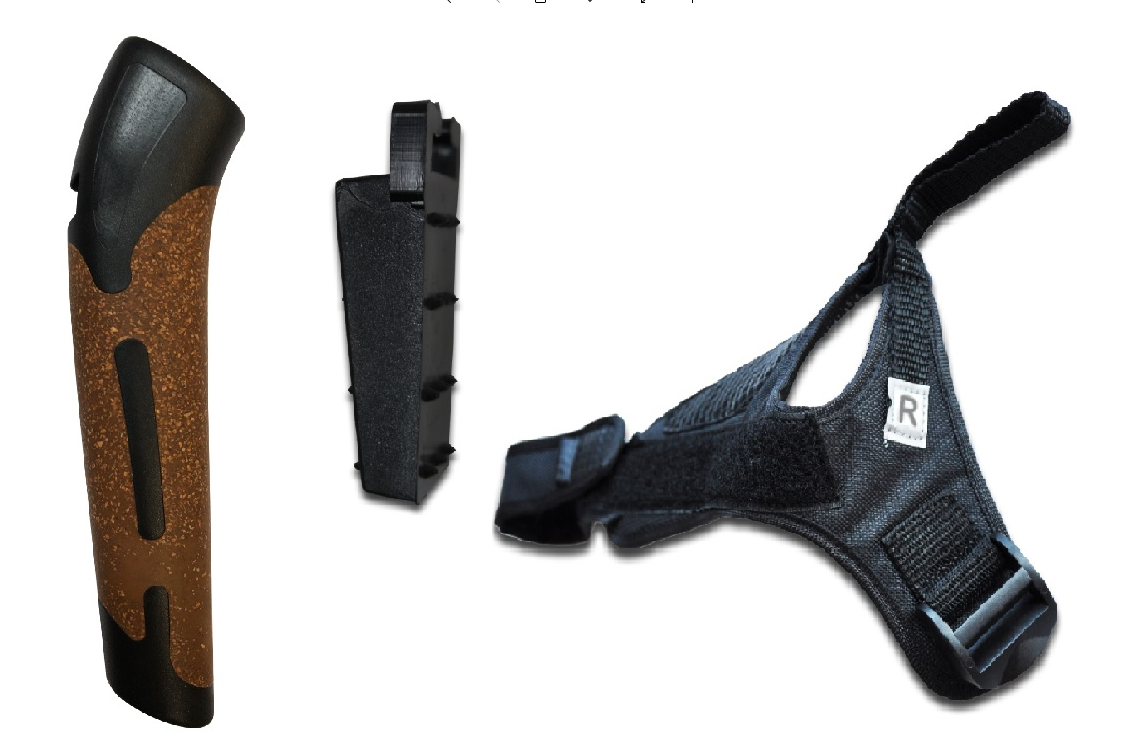
Photo: Grip, strap, and plastic wedge for Nordic walking poles (standard version of strap fixing)
Another kind of strap attachment system, where a strap is easily detachable, offers a faster and simpler way of installing and removing the strap from the Nordic walking pole grips – it’s called the Click system.
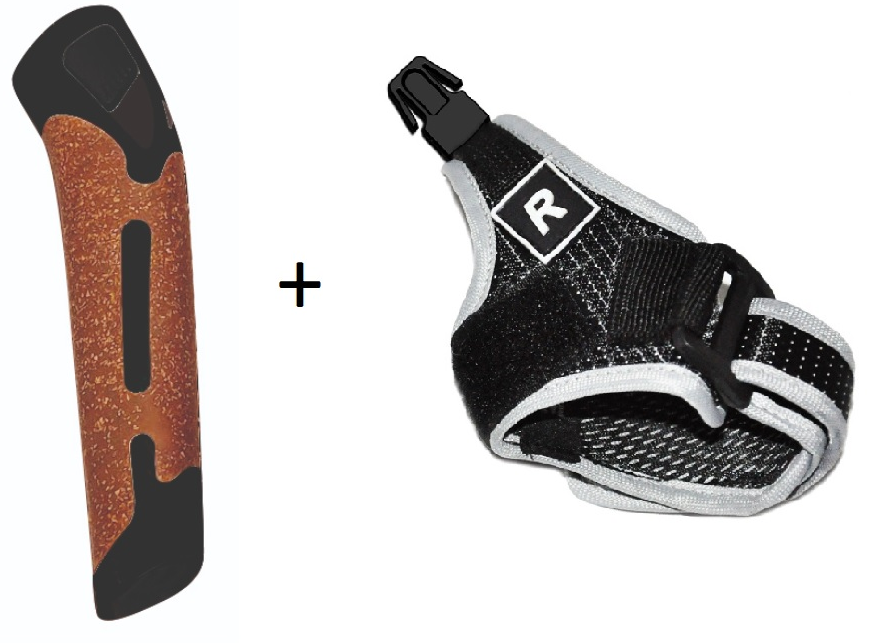
Photo: Nordic walking Click grip and Click strap
With the Click system, the part of the strap that fits into the grip is equipped with a small click clip (buckle) that snaps into place when inserted into the grip slot. Removing the Click strap from the grip is quick and easy. Simply press the side buttons of the Click grip.
A Nordic walking pole strap and grip using the Click system represents a wonderful and elegant solution in all situations when a free hand might be needed quickly during the walking exercise.
Check the instructions on how to attach and release the Click strap from the Click grip.
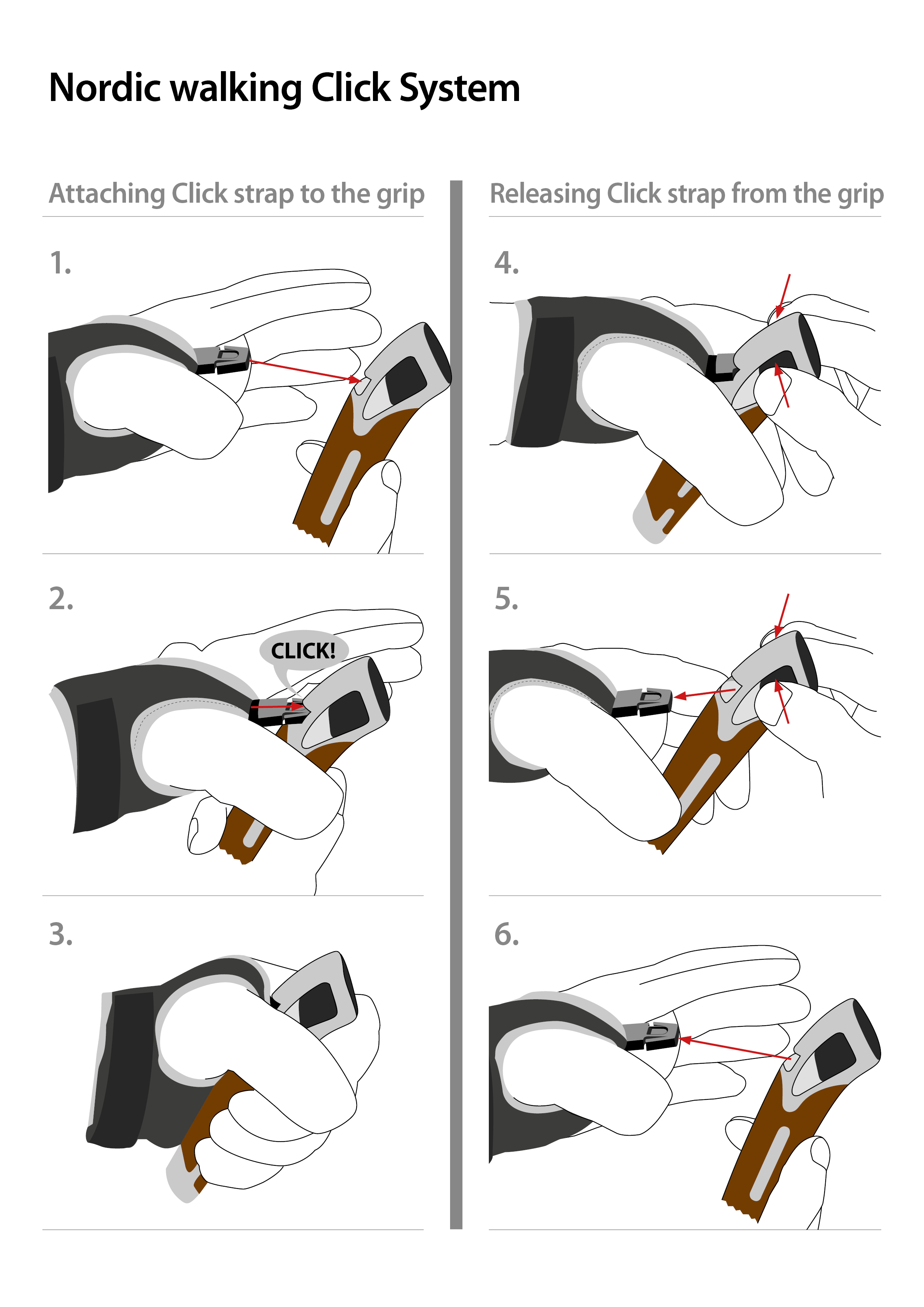
We kindly invite you to browse our online store – you could find suitable trekking, hiking, and Nordic walking pole replacements for your existing poles!
The Difference between Nordic walking poles and trekking poles
Nordic walking poles with grips, straps, and tips are designed and shaped a little differently, with the thought on the performance, ease and quality usage, with emphasis on their sporty side.
Nordic walking poles are usually lighter and with the ability to set different pole lengths. NW poles work better on hills and most coastal paths, especially with faster walking and the need to engage the whole body. Their job is to keep you in an upright and symmetrical position when walking, to strengthen the upper body and core, and help take the pressure off joints. Trekking poles are better for rocky, uneven, and mountainous terrain and usually do not come with special straps and grips.
How to use Nordic walking poles correctly
Nordic walking is an outdoor recreational activity where nature is the gym, and pure skies are the limit. It can also last longer, so we must properly equip ourselves for effective performance. Footwear and clothing should also be comfortable, and layering of clothing is recommended.
When walking with poles, special attention is brought to the coordination and rhythm of arm and leg movements. Arms, shoulders, and neck should be relaxed at all times. How your arms move is very important. After each thrust with the poles, the palm almost completely releases the pole grip, and the pole is left hanging by the strap with the support of two fingertips. Therefore, letting go of the grip during the push and completing the push with the support of the strap (and fingertips) is an important part of Nordic walking training.
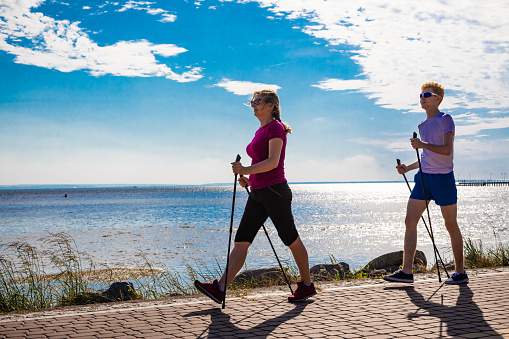
5 health benefits of Nordic walking
As mentioned before, evidence has confirmed the benefits of Nordic walking. As Harvard Health eloquently put it: ''It burns more calories and works more muscles than conventional walking.'' Its cardiovascular exercise with muscle workout shows overall benefit for general health, while calorie burn is connected with fat mass reduction. In addition to deep breathing and spending quality time outside, both are connected to not only a healthy body but a healthy mind as well. Continuous outside walking will reduce chronic pain and help fight against depression and anxiety.
Here are five more reasons to choose Nordic walking as your summer activity:
- Activation of your core muscles, which will properly stabilize your whole body. A strong core leads to better posture, balance, and coordination. It also reduces lower back pain and improves bladder control.
- It will improve your lymph system function, reduce the incidence of lymphedema onset, and boost your blood circulation.
- Maintains whole-body bone density, which is extremely important for reducing your risk of osteoporosis.
- Regular Nordic walking also reduces the stress on joints, especially in the knees, feet, and hips.
- It will improve your mental well-being and ensure you spend enough time in nature.
The different techniques for Nordic walking
There are different techniques you can use when walking with your Nordic poles. Nordic walking advances the way you would normally walk. As it is done with poles, it is important to pay attention to your arm movement; the poles must feel natural in your hands.
Step with the heel and roll to the ball of your foot, focusing on beginning your step on the heel of your foot while planting the opposite arm’s pole to the ground. Stepping on your heel will allow the opposite pole to push your body forward.
Engage your entire body and always observe your natural motion. Keep your head and hips straight while softly turning the rib cage from right to left. Walk while keeping this rotation and allow your body to move naturally as you push off with the Nordic poles.
Instructions for mastering the basic technique:
- Shoulders are relaxed, the head is held high, eyes forward, and poles close to your body.
- Hands are slightly open so that the poles can move forward. The poles must not be held tightly as they must swing from the wrist straps.
- The leading foot strikes the ground, and the opposite arm swings forward to waist height.
- The opposite pole strikes the ground level with the heel of the opposite foot, the poles remain to point diagonally backwards, and they are never in front of the body.
- Push the pole as far back as possible, the arm straightening to form a continuous line with the fully extended arm, the hand opening of the grip by the end of the arm swing.
- The foot rolls through the step to push off with the toe. This lengthens the stride behind the body, getting the most out of each stride. The arm motion is loose and relaxed.
- Keeping the arms relaxed and the poles behind the body are key elements in the proper technique.
- Keep in mind that the wrong technique would be planting the poles in front of the body and bending the elbow too much.
Single and double poling technique
Single and double poling are two of the other walking techniques. Single poling mimics your feet with just one pole in front of you for each stride you make. You can do it with the same side arm and leg together or with opposite arm and leg together.
Double poling is using two poles and planting them symmetrically in front of you. You pull yourself forward as you walk. When walking, it should look like this: double poling and then take three steps, double poling, and three steps. Don't forget to release the hand straps in the end.
Walking with poles behind your back
First, you will need to shorten your poles. Place them behind your arms, more precisely behind your elbows. Remember to drop and relax your shoulders, keeping your head high and your eyes directly on the horizon. Walk upright with an open chest.
Walking while dragging poles
Try this for a different kind of exercise: Slip your hands into the hand straps. Hold poles with index and middle finger, hands open. Start walking, swinging the arms naturally by dragging the poles on the ground. Relax the shoulders as you go.
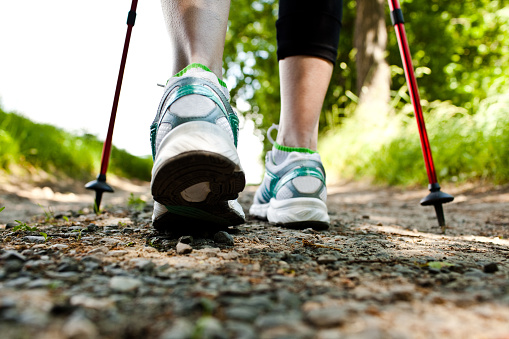
Need any additional help, or are you having trouble finding the right pole or accessories? We are here to help.

